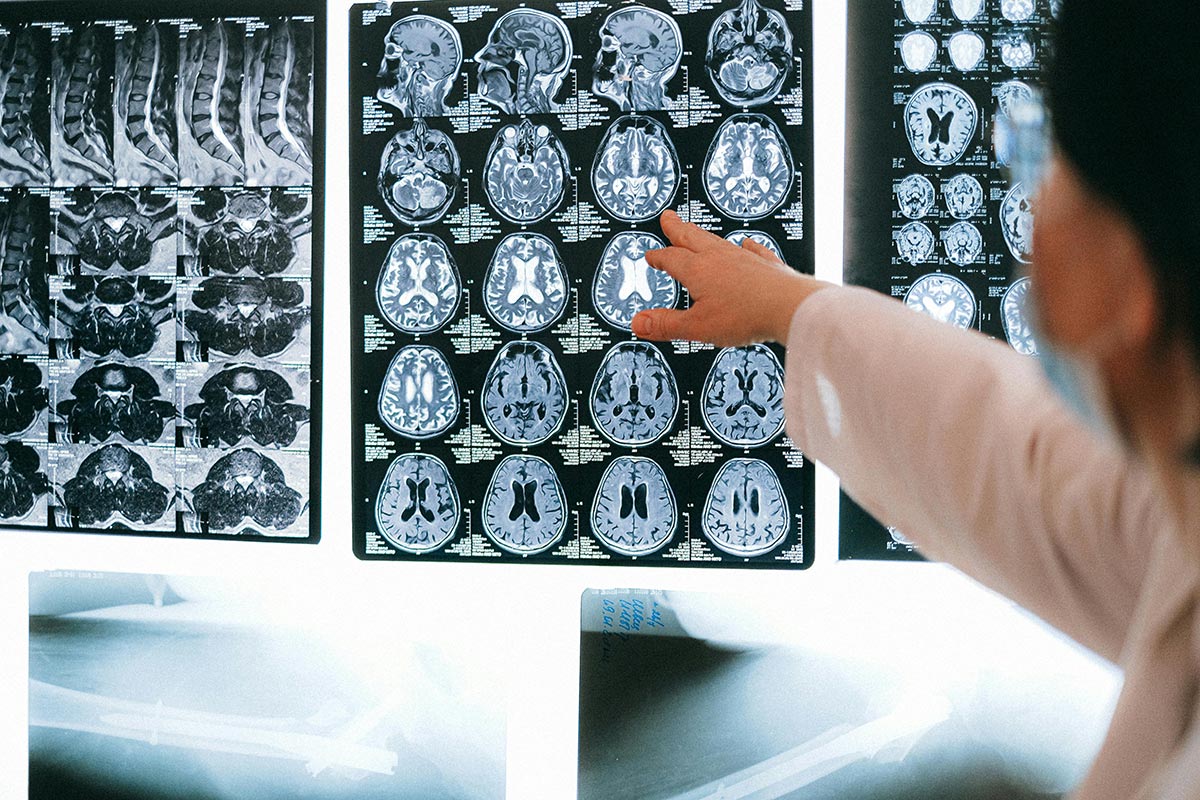
Introduction to Dual Diagnosis
Dual diagnosis, also known as co-occurring disorders, refers to the simultaneous presence of a mental health disorder and a substance use disorder. These complex conditions require specialized treatment programs that address both issues concurrently, acknowledging that traditional methods may not suffice. This article delves into the intricacies of dual diagnosis treatment programs, their benefits, and the importance of integrated care in achieving successful recovery outcomes.
Defining Dual Diagnosis Treatment

What is dual diagnosis treatment?
Dual diagnosis treatment refers to specialized programs designed for individuals concurrently dealing with a mental health disorder and a substance use disorder. This condition, often referred to as co-occurring disorders, is prevalent among various populations, particularly those facing challenges like genetics, stress, or trauma. Understanding this interconnection is crucial for effective recovery strategies.
Effective dual diagnosis treatment integrates multiple approaches to care. Key components include therapeutic techniques such as:
- Cognitive Behavioral Therapy (CBT): Aims to change negative thought patterns.
- Dialectical Behavior Therapy (DBT): Focuses on emotional regulation and coping skills.
- Medication Management: Helps balance mental health symptoms and reduce cravings associated with substance use.
Support groups and inpatient rehabilitation facilities also play vital roles in nurturing long-term recovery and establishing a supportive community environment. The goal of dual diagnosis treatment is not just abstinence from substances but fostering a deeper understanding of the interplay between mental health challenges and substance use, ultimately promoting healthier coping mechanisms for lasting outcomes.
Recognizing the Need for Dual Diagnosis Treatment

What are common signs and symptoms indicating the need for dual diagnosis treatment?
Identifying the need for dual diagnosis treatment can often be challenging due to the overlapping signs and symptoms of mental health disorders and substance use disorders. Common indicators include:
- Mood swings: Frequent and intense changes in mood may signal underlying psychological issues.
- Anxiety: Persistent feelings of anxiety that lead to increased substance use for relief can be critical red flags.
- Cognitive difficulties: Trouble concentrating or remembering things often points to co-occurring disorders.
- Withdrawal behaviors: Avoidance of social interactions and increased substance consumption highlight serious concerns.
- Perceptual disturbances: Experiencing hallucinations or other sensory misperceptions can suggest a mental health condition.
Individuals exhibiting these symptoms often face emotional distress, behavioral changes, and cognitive impairments. The complex relationship between mental health and substance use makes recognizing these signs essential for obtaining proper integrated treatment. Addressing both disorders concurrently not only aids in recovery but also helps prevent the exacerbation of symptoms.
Complications in diagnosis
Diagnosing dual diagnosis can be complicated for several reasons. The main issues include:
- Symptom overlap: Signs of mental health disorders often mimic or mask those of substance use issues, making it difficult to differentiate between the two.
- Potential for self-medication: Individuals may use substances in an attempt to self-medicate for mental health symptoms, which can obscure a proper diagnosis.
- Stigmatization: Fear of stigma can cause individuals to dismiss their issues, delaying treatment.
Given the prevalence of co-occurring disorders and the complexities they introduce, early recognition of symptoms and a comprehensive assessment are crucial for effective dual diagnosis treatment.
Integrated Care: A Key to Successful Recovery

Importance of Integrated Treatment
Integrated treatment is vital for individuals who experience a dual diagnosis, where both mental health disorders and substance use disorders coexist. This approach recognizes the interrelated nature of these conditions and aims to address them holistically. By providing simultaneous care, integrated treatment minimizes the risk of exacerbating either disorder due to neglect.
Moreover, evidence suggests that over 50% of individuals undergoing addiction treatment also struggle with other mental health issues. A focused approach fosters better understanding and management of symptoms by addressing both areas effectively.
How does integrated care benefit individuals with dual diagnosis?
Integrated care benefits individuals with dual diagnosis by treating both mental health disorders and substance use disorders simultaneously. This comprehensive approach helps reduce relapse rates and enhances overall quality of life by addressing the interconnected nature of these disorders. Evidence shows that integrated treatment results in higher retention rates, fewer hospitalizations, and significant reductions in psychiatric symptoms, particularly for conditions like PTSD.
Additionally, integrated care models facilitate strong therapeutic relationships and improve communication among providers, ensuring that individuals receive holistic support tailored to their unique needs. By implementing early detection and standardized screening, integrated care increases the likelihood of successful recovery for those with dual diagnosis.
Benefits of Dual Diagnosis Care
The benefits of dual diagnosis care extend beyond mere symptom management. Individuals receive:
- Coping Skills Development: Learning to manage both conditions effectively.
- Community Support: Access to peer groups fostering fellowship and shared experiences.
- Enhanced Recovery Outcomes: Improved management of mental health and reduced likelihood of relapse significantly.
In summary, an integrated approach to treating dual diagnosis offers individuals a practical path towards recovery, addressing the full scope of their needs instead of isolating them into singular treatment modalities.
The Structure of Dual Diagnosis Treatment Programs
What does a typical dual diagnosis program look like?
A typical dual diagnosis program integrates treatment for both mental health issues and substance use disorders, employing evidence-based practices such as therapy, medication management, and support groups.
These programs are structured around a comprehensive framework that includes clinical assessment processes, treatment continuity, and trained staff specialized in handling co-occurring disorders. Effective treatment often incorporates motivational interventions and stage-wise approaches to cater to individuals' varying recovery needs.
Dual Diagnosis Program Components
Dual diagnosis programs typically encompass several critical components:
| Component | Description | Importance |
|---|---|---|
| Clinical Assessment | Involves an in-depth evaluation of mental health and substance use issues. | Identifies the specific needs of the individual. |
| Personalized Treatment Plans | Treatment is customized to address both the substance use and mental health disorders simultaneously. | Enhances the effectiveness of interventions. |
| Evidence-Based Therapies | Utilizes therapies like CBT and DBT that are proven effective for managing co-occurring disorders. | Supports coping skills and behavioral change. |
| Medication Management | Addresses psychiatric symptoms and mitigates withdrawal symptoms through appropriate medications. | Important for holistic symptom management. |
| Group Counseling | Facilitates shared experiences and peer support, fostering community among participants. | Builds a supportive recovery network. |
| Aftercare Services | Provides ongoing support post-treatment, which is crucial for long-term recovery. | Helps prevent relapse and promotes sustained recovery. |
Therapeutic Interventions
In addition to structural components, therapeutic interventions are pivotal in dual diagnosis treatment. Techniques such as:
- Cognitive Behavioral Therapy (CBT): Aims to change negative thought patterns.
- Dialectical Behavior Therapy (DBT): Focuses on emotion regulation and distress tolerance.
- Motivational Interviewing: Encourages individuals to engage in their treatment actively.
- Contingency Management: Uses incentives to reinforce positive behaviors related to abstinence.
This holistic approach, embodying both structured support and therapeutic rigor, significantly enhances recovery outcomes for individuals grappling with co-occurring disorders.
Effective Treatment Strategies for Dual Diagnosis
What are the treatment strategies for dual diagnosis?
Treatment strategies for dual diagnosis prioritize an integrated approach since it involves managing both a mental health disorder and a substance use disorder simultaneously. These strategies are designed to address the complexities of having co-occurring disorders and may include diverse modalities to cater to individual needs.
Treatment Modalities
- Cognitive Behavioral Therapy (CBT): This type of therapy helps individuals identify and change destructive thought patterns and behaviors. By focusing on the relationship between thoughts, feelings, and actions, CBT equips patients with tools to better cope with life's challenges.
- Dialectical Behavior Therapy (DBT): DBT is particularly beneficial in teaching emotional regulation and promoting mindfulness. It helps individuals develop the skills necessary to handle intense emotions, which can be crucial for those struggling with addiction and mental health issues.
- Medication Management: Medications may play a key role in alleviating mental health symptoms or managing withdrawal symptoms. For instance, antidepressants can help improve mood, reducing cravings for substances. Such medications should always be used under professional guidance to ensure safety and effectiveness.
- Support Groups: Participation in peer-led support groups, like Alcoholics Anonymous or Double Trouble in Recovery, fosters community and understanding among individuals facing similar struggles, providing essential encouragement in the recovery process.
Personalized treatment plans must consider various factors, including age, the specific substances used, and the nature of the underlying mental health issues. This tailored approach enhances the likelihood of effective outcomes for individuals navigating dual diagnoses.
The Benefits of Dual Diagnosis Treatment Programs

What are the benefits of dual diagnosis treatment programs?
Dual diagnosis treatment programs offer a range of benefits that significantly improve the quality of life and recovery outcomes for individuals facing co-occurring disorders. By addressing both mental health issues and substance use disorders simultaneously, these programs provide integrated treatment approaches that are critical for effective healing.
- Improved Recovery Outcomes: Addressing addiction alongside mental health conditions leads to better overall treatment outcomes, as individuals begin to understand the complex relationship between their mental health struggles and substance use.
- Reduced Relapse Rates: Integrated programs significantly reduce the likelihood of relapse by equipping participants with coping strategies and insights that empower them to recognize and manage triggers effectively.
- Enhanced Motivation for Recovery: Tailored support encourages individuals to stay motivated and engaged in their recovery process. As they develop healthy coping skills, their confidence in overcoming challenges strengthens.
- Comprehensive Care: These programs promote improved physical health and well-being, recognizing that overall health is crucial for effective recovery.
- Sustained Aftercare: Crucially, aftercare resources are provided to assist individuals as they navigate life beyond treatment, supporting their long-term sobriety and reintegration into society.
Through this multifaceted approach, dual diagnosis treatment programs create a supportive environment conducive to lasting recovery.
Educational Resources for Understanding Dual Diagnosis
Where can I find educational resources to understand dual diagnosis better?
Finding effective educational resources on dual diagnosis is essential to understanding its complexities. The Substance Abuse and Mental Health Services Administration (SAMHSA) offers a growing array of tools, including evidence-based practices and free materials tailored to aid both individuals and professionals.
Noteworthy Resources:
- Dual Diagnosis Capability in Addiction Treatment (DDCAT) Index: This helps assess and enhance the ability of treatment services to address dual diagnoses.
- Mental Health Treatment Index: A complementary tool to evaluate mental health services concerning dual diagnoses.
Recommended Publications:
- Trauma and Addiction by Dayton
- The Dual Disorders Recovery Book by Hazelden
Additional Support and Education: Organizations like the National Alliance on Mental Illness (NAMI) provide extensive support and educational initiatives for those impacted by dual diagnosis. Consider enrolling in the course 'Understanding Dual Diagnosis: Intellectual Disability and Mental Health' for deeper insights into specific populations affected by these issues.
With these resources, individuals and families can better navigate the nuances of dual diagnosis and find appropriate support.
Challenges and Gaps in Dual Diagnosis Treatment
Service Gaps
Despite the increasing recognition of the importance of dual diagnosis treatment, there are significant gaps in available services. Data from SAMHSA indicates that only a small percentage of individuals with co-occurring disorders receive integrated treatment. Approximately 18% of addiction treatment programs and 9% of mental health programs can effectively address dual diagnoses, illustrating a stark need for improvement in this area. Most existing programs tend to operate at a capacity that addresses either addiction or mental health issues separately, rather than as interconnected conditions.
Need for Increased Capabilities
The dual diagnosis capability in treatment settings is crucial, as integrated care has been shown to yield better recovery outcomes. The DDCAT and DDCMHT indexes serve as standard measures, but they highlight the limited selection of programs equipped to manage both disorders.
Moreover, over 50% of individuals in addiction treatment suffer from other mental health issues, emphasizing that providers need to develop programs tailored specifically to bridge this treatment divide. To enhance recovery rates, more treatment facilities must adapt their services to provide comprehensive, integrated care for those struggling with both mental health and substance use disorders.
The Role of Support Systems in Recovery

Peer Support
Peer support plays a vital role in the recovery journey for individuals facing co-occurring disorders. Programs like 12-step groups and peer-led networks provide a shared space for people to connect through similar experiences. Such interactions promote bonding, understanding, and motivation, which can significantly enhance recovery outcomes.
Community Resources
Access to community resources is essential for sustained recovery. Organizations that offer informational resources, connection to local treatment centers, and support groups can help individuals navigate their recovery journey confidently. These resources are instrumental in connecting individuals to tailored services that address both mental health and substance use needs, fostering an environment of support and understanding.
| Support System Type | Description | Benefits |
|---|---|---|
| Peer Support Groups | Facilitate shared experiences and mutual encouragement | Increased motivation and accountability |
| Community Organizations | Connect individuals with local treatment and recovery services | Accessibility to tailored supports |
Moving Forward with Dual Diagnosis Treatment
Dual diagnosis treatment programs play a critical role in addressing co-occurring mental health and substance use disorders by providing integrated and comprehensive care. The importance of recognizing signs, understanding treatment strategies, and utilizing educational resources cannot be understated. As we move forward, expanding dual diagnosis capabilities and integrating support systems will be essential to improving recovery outcomes and fostering long-term sobriety for those affected. By addressing gaps and challenges in current services, we can better meet the needs of individuals with dual diagnoses and support them on their path to recovery.
References
- National Helpline for Mental Health, Drug, Alcohol Issues - SAMHSA
- Dual Diagnosis - MedlinePlus
- Women's Dual Diagnosis Treatment Center
- Women's Dual Diagnosis Treatment Center in California | NDFW
- Deal with a Dual Diagnosis: Substance Abuse & Mental Health
- Dual Diagnosis vs. Addiction Treatment | Skyland Trail
- 5 Things to Know About Dual Diagnosis Treatment | Holly Hill Hospital
- Dual Diagnosis Treatment Program | California Rehab Center
- Our Pennsylvania Dual Diagnosis Facilities at Arkview Recovery
- Dual Diagnosis Rehab Treatment Centers Near Me
.svg)





